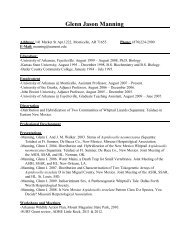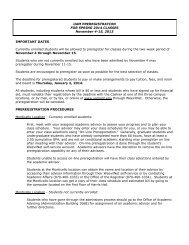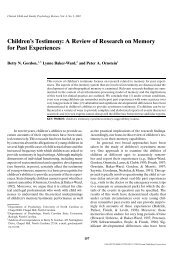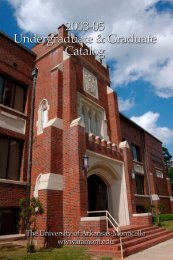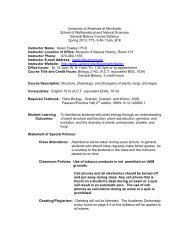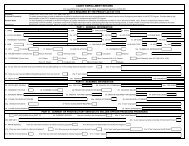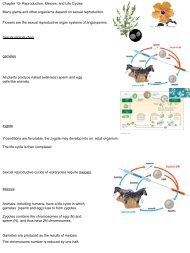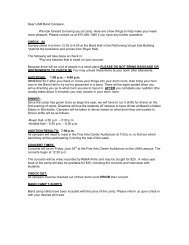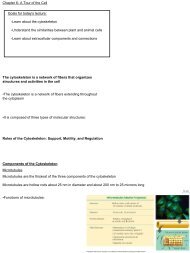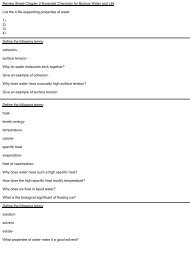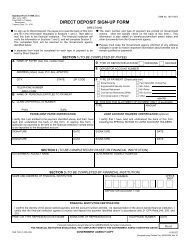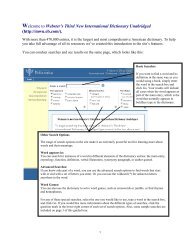A TAAP - University of Arkansas at Monticello
A TAAP - University of Arkansas at Monticello
A TAAP - University of Arkansas at Monticello
Create successful ePaper yourself
Turn your PDF publications into a flip-book with our unique Google optimized e-Paper software.
PART III Geometry Curriculum Framework––April 2007<br />
The <strong>Arkansas</strong> Geometry M<strong>at</strong>hem<strong>at</strong>ics Curriculum Framework* (continued)<br />
Strands Content Standards Student Learning Expect<strong>at</strong>ions<br />
4—RELATIONSHIPS BETWEEN TWO<br />
AND THREE DIMENSIONS (R)<br />
5—COORDINATE GEOMETRY AND<br />
TRANSFORMATIONS (CGT)<br />
4. Students will analyze<br />
characteristics and properties <strong>of</strong><br />
two- and three-dimensional<br />
geometric shapes and develop<br />
m<strong>at</strong>hem<strong>at</strong>ical arguments about<br />
geometric rel<strong>at</strong>ionships.<br />
5. Students will specify loc<strong>at</strong>ions,<br />
apply transform<strong>at</strong>ions, and<br />
describe rel<strong>at</strong>ionships using<br />
coordin<strong>at</strong>e geometry.<br />
37<br />
1. Explore and verify the properties <strong>of</strong> quadril<strong>at</strong>erals.<br />
2. Solve problems using properties <strong>of</strong> polygons:<br />
• sum <strong>of</strong> the measures <strong>of</strong> the interior angles <strong>of</strong> a<br />
polygon<br />
• interior and exterior angle measure <strong>of</strong> a regular<br />
polygon or irregular polygon<br />
• number <strong>of</strong> sides or angles <strong>of</strong> a polygon<br />
6. Solve problems using inscribed and circumscribed figures.<br />
7. Use orthographic drawings (top, front, side) and isometric<br />
drawings (corner) to represent three-dimensional objects.<br />
1. Use coordin<strong>at</strong>e geometry to find the distance between two<br />
points, the midpoint <strong>of</strong> a segment, and the slopes <strong>of</strong> parallel,<br />
perpendicular, horizontal, and vertical lines.<br />
2. Write equ<strong>at</strong>ions <strong>of</strong> lines in slope-intercept form and use slope<br />
to determine parallel and perpendicular lines.<br />
3. Determine, given a set <strong>of</strong> points, the type <strong>of</strong> figure based on<br />
its properties (parallelogram, isosceles triangle, trapezoid).<br />
4. Write, in standard form, the equ<strong>at</strong>ion <strong>of</strong> a circle, given a<br />
graph on a coordin<strong>at</strong>e plane or the center and radius <strong>of</strong> a<br />
circle.<br />
5. Draw and interpret the results <strong>of</strong> transform<strong>at</strong>ions and<br />
successive transform<strong>at</strong>ions on figures in the coordin<strong>at</strong>e<br />
plane:<br />
• transl<strong>at</strong>ions<br />
• reflections<br />
• rot<strong>at</strong>ions (90°, 180°, clockwise and<br />
counterclockwise about the origin)<br />
• dil<strong>at</strong>ions (scale factor)<br />
* The Content Standards and Student Learning Expect<strong>at</strong>ions listed are those th<strong>at</strong> specifically rel<strong>at</strong>e to the released test<br />
items in this booklet.



